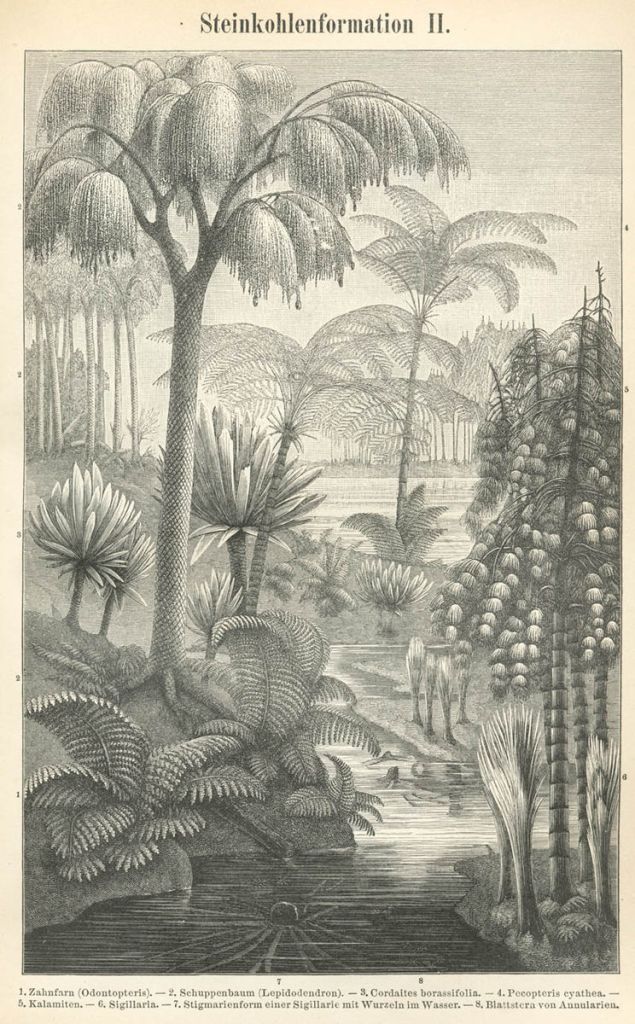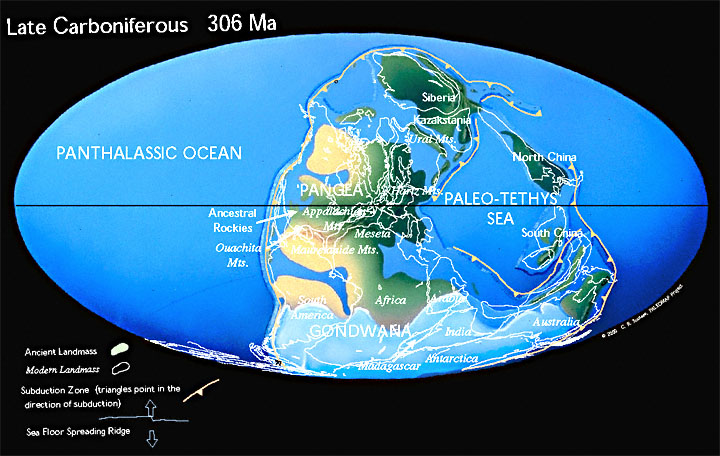Listen to Episode 95 on PodBean, Spotify, YouTube, or just search for it in your podcast app!
Most famous extinction events are very animal-focused, but the end of the Carboniferous saw one of the worst plant mass extinctions in Earth history. In this episode, we discuss the specifics, the background, the causes, and the impacts of the Carboniferous Rainforest Collapse.
In the news
Tooth marks reveal the identity of the croc that bit this ground sloth
Dinosaur embryo shows off bizarre features of baby sauropods
A new statistical approach to identifying sexual differences in dinosaurs
Oldest known evidence of hibernation in the tusks of Lystrosaurus
End of the Carboniferous
The Carboniferous Period is famous for its plants. The Earth’s continents were overtaken by vast forests and swamps (thanks in large part to the evolution of the earliest trees). These vegetated wonderlands were populated by some the planet’s earliest complex animal ecosystems, including spectacular early insects and early tetrapods. These environments left behind carbon-rich (hence the name) deposits that became many of our most famous and bountiful modern coal seams.

But the Period ended in disaster. The Carboniferous Rainforest Collapse, as the name implies, saw the demise of forests and other biomes dominated by Carboniferous plants like Lepidodendron. In their place arose dry-adapted ecosystems dominated by other plant groups, notably early gymnosperms and famous plants like Glossopteris, that would come to dominate the world for some time afterward (gymnosperms still dominate parts of the world today, namely northern forests).

Image by Michael C, Rygel / CC BY-SA 3.0
Animals, too, suffered extinction and turnover during this event. Many early tetrapods disappeared as ecosystems reshuffled, and many surviving amphibians struggled to rebound. But this does seem to have paved the way for the recently-evolved amniotes (equipped with the all-important amniotic egg) to take over dry inland habitats.
Out of the Icehouse
This extinction event is tied tightly to climate change. The world of the Late Carboniferous was an icehouse – there was permanent ice at the poles (sound familiar?), most notably major ice sheets on the southern continent of Gondwana. But as the Carboniferous gave way to the Permian, rising carbon dioxide levels coincided with rising temperatures (sound familiar?), gradually ending this Paleozoic Ice Age and ushering in a greenhouse world that would last until only a couple million years before the present.

These changes, coupled with the coalescing of the supercontinent Pangaea, led to a trend of warming, drying, and more extreme seasonal variations around the globe. This seems to be what spelled doom for the wet-loving swamps and forests, and what made the Permian Period, as Aly likes to describe it, just a terrible time for plants.
There are many reasons why carbon dioxide levels fluctuate over time, related to shifting continents, changing ocean currents, changes in orbital dynamics of the Earth, and more. But it can also be related to volcanoes, and like with so many major extinction events, there are a couple of Large Igneous Provinces (vast regions of erupted lava from massive long-term volcanic activity) that date back to near this time, most notably the Skagerrak-Centered Province in northern Europe. It’s always difficult to know for sure, but this could be related to the changing climate of this time.
Learn More
If you’re into technical papers, here are two good resources:
Dunne et al 2018, on the impact of the Rainforest Collapse on early tetrapods
Cascales-Mañana et al 2013, on the fossil record of plant extinction
—
If you enjoyed this topic and want more like it, check out these related episodes:
- Episode 73 – Trees
- Episode 115 – Biomes
- Episode 77 – Fins to Feet: The Fish-Tetrapod Transition
- Episode 65 – The Late Devonian Extinction(s)
We also invite you to follow us on Twitter, Facebook, or Instagram, buy merch at our Zazzle store, join our Discord server, or consider supporting us with a one-time PayPal donation or on Patreon to get bonus recordings and other goodies!
Please feel free to contact us with comments, questions, or topic suggestions, and to rate and review us on iTunes!